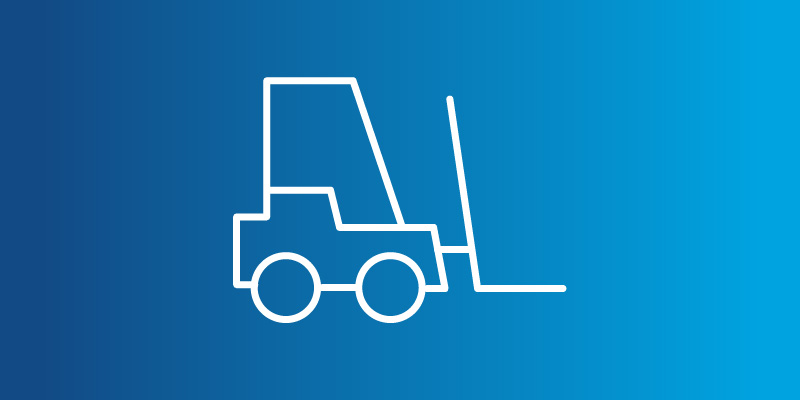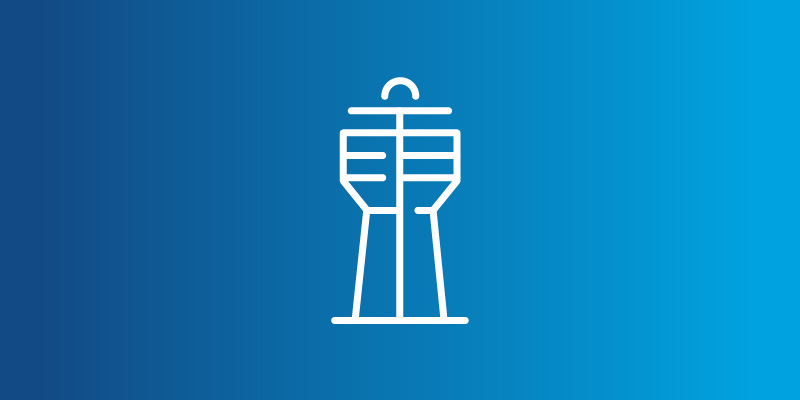Servicios de transporte en caja completa en América del Norte que impulsan la solidez de su cadena de suministro

Capacidad confiable para el transporte de cargas en caja completa
Acceda a la red de transporte de carga en caja completa más grande de Norteamérica y navegue por el mercado fragmentado con confianza. Movemos más carga en cajas completas (FTL) que cualquier otra compañía en el mundo.

C.H. Robinson Drop Trailer Plus™
Siendo el cuarto proveedor más grande de drop trailer en América del Norte, ayudamos a los transportistas a maximizar el rendimiento con nuestro conjunto de soluciones basadas en activos. Desde nuestra flota gestionada con nuestra marca, hasta remolques de marca compartida y equipos de remolque a través de relaciones confiables y estratégicas con transportistas, alineamos una estrategia de activos para satisfacer mejor sus necesidades únicas de transporte de mercancías.
Obtenga la escala y la flexibilidad de un bróker con el control y la visibilidad de una transportista.
Opciones de equipamiento para cada necesidad
Furgón (tráiler box)
Proteja sus materiales y productos de daños transportando en una caja seca, que agrega un nivel de seguridad a sus envíos.
Remolque cerrado
Agilice el mercado fragmentado de carga en caja completa en una experiencia simplificada, incluso cuando surjan imprevistos.
Plataforma abierta/plataforma
Mantenga su carga especial en movimiento con servicios de plataforma que mitigan las fluctuaciones del mercado para cargas planificadas, estacionales y basadas en proyectos.
Sistema de temperatura controlada
Maximice nuestros servicios de transporte con temperatura controlada para cumplir con los estrictos requisitos y mantener la calidad.
Remolque de cortina lateral/lona
Cumpla con entregas a tiempo y completas cruzando fronteras con remolques de tautliner/curtain side (cortina latera/deslizable), que ofrecen flexibilidad para cargar el producto y protección contra condiciones climáticas imprevistas.
Servicios de transporte de cargas urgentes
Envío acelerado/equipo
Elija un servicio de operadores en equipo o servicio urgente para transportar su carga terrestre urgente más rápido, sin comprometer la obtención de tarifas competitivas.
Servicios especializados
Cubra sus necesidades más específicas de transporte de carga en caja completa, transporte desde materiales peligrosos (HAZMAT) hasta transporte power only: C.H. Robinson tiene la solución.
Qué distingue los servicios de transporte terrestre de C.H. Robinson

¿Envío de productos a otros países?
Libere el potencial de su cadena de suministro en Norteamérica con C.H. Robinson, líder en logística cross-border. Con nuestros expertos que gestionan más de 2 millones de cargas cross-border al año, aproveche nuestra experiencia y apoyo local.

Desarrolle su mejor estrategia
Desde estrategias para negociar capacidad de transporte hasta la elaboración de un plan de de rutas, descubra todo lo necesario para crear su estrategia:
- Alinee la estrategia con las caracteristicas de su carga
- Analice los datos a nivel de una carga
- Lleve a cabo una licitación
- Construya su programa de rutas


Ayudar a STIHL a responder con rapidez
Cuando se trata de entregas urgentes —a regiones devastadas por una tormenta o en las altas montañas—, las hacemos posible las 24 horas del día, los 7 días de la semana.
Obtenga la información más reciente. Domine la competencia.
El C.H. Robinson Edge ofrece consejos de nuestros expertos sobre las novedades, lo que viene y qué hacer al respecto. Descubra las tendencias del mercado local y global del transporte, impulsadas por nuestros datos y experiencia incomparables, que le permitirán anticiparse a los cambios y fortalecer su cadena de suministro en un mundo donde el éxito depende de la agilidad
Servicios relacionados para mejorar su estrategia de transporte

Transporte terrestre multimodal
Mueva cargas fácilmente entre puertos y almacenes con servicios de arrastre rápidos y eficientes.

Carga paletizada
Obtenga flexibilidad y cumpla con la demanda de sus clientes con soluciones personalizadas de carga consolidada (LTL) para entregas puntuales y eficientes.

Soluciones integrales
Configure nuestra tecnología TMS, transporte gestionado 3PL y servicios 4PL para abordar sus desafíos logísticos más difíciles y mejorar la eficiencia.
Llevemos su carga donde necesite llegar
Preguntas frecuentes
Q: ¿Es FTL más costoso que LTL?
Sí. El envío de carga completa (FTL) generalmente cuesta más en total que el envío de carga parcial (LTL), porque con FTL usted paga por el uso exclusivo de un camión completo (independientemente de lo lleno que esté).
Por el contrario, LTL suele ser más económico para cargas pequeñas ya que usted comparte el espacio del remolque y los costos con otros remitentes. Sin embargo, si usted tiene suficiente carga para llenar un tráiler completo, el FTL puede ser más rentable por unidad y ofrece una entrega más rápida y directa (sin paradas múltiples), mientras que el LTL sigue siendo la opción más económica para volúmenes de carga limitados.
Q: ¿Qué se considera un envío de carga de camión completo?
Un envío se considera un camión completo cuando es lo suficientemente grande como para ocupar la mayor parte o la totalidad de un remolque estándar de 48 a 53 pies. En la práctica, esto generalmente significa alrededor o más de 10,000 libras de carga o cualquier cosa que exceda aproximadamente la mitad de la capacidad del remolque.
Por ejemplo, un camión de 53 pies puede acomodar aproximadamente de 24 a 30 palés estándar (apilados individualmente) o hasta ~43.000 libras de mercancías. Una carga que se acerque a esos límites calificaría como un envío de camión completo. En resumen, si su carga no puede compartir cómodamente el espacio con otros envíos y casi llena un remolque por sí sola, se considera un envío de carga completa de camión.
Q: ¿Cuántos palets se consideran una caja completa?
Un camión completo estándar puede transportar alrededor de 26 palés (apilados en una sola capa) en un remolque de 53 pies (o hasta ~52 apilados en doble capa, dependiendo del peso y la capacidad de apilamiento). En general, si tiene más de 10-12 palés, su envío suele considerarse FTL en lugar de LTL.
Muchos transportistas utilizan 12 palés (o aproximadamente 15.000 libras) como regla general; por encima de esa cantidad, un camión completo dedicado suele ser la opción más eficiente. En resumen, aunque una carga completa de camión puede alcanzar un máximo de entre 24 y 30 palés (dependiendo de la configuración), cualquier cantidad que supere aproximadamente una docena de palés generalmente se considera un envío de carga completa de camión.
Q: ¿Cuáles son los dos tipos principales de transportadoras de carga de camión?
Los dos tipos principales de transportadoras de carga completa son las transportadoras de alquiler y las transportadoras contratadas. Las transportadoras de alquiler, también llamadas transportadoras comunes, ofrecen sus servicios de camiones al público en general y transportan carga para cualquier remitente (a menudo a tarifas publicadas o de mercado). Por el contrario, las transportadoras por contrato dedican capacidad a cargadores específicos mediante acuerdos: transportan exclusivamente para esos clientes bajo términos contractuales, generalmente con tarifas negociadas y compromisos de servicio. Para los transportistas, esto significa que usted puede emplear una transportadora de alquiler (cualquier transportadora disponible por carga) o trabajar con una transportadora contratada que se comprometa con su carga en virtud de un acuerdo a más largo plazo.
Los corredores de carga y los proveedores de logística de terceros (3PL) ofrecen la valiosa ventaja de ayudarle a contratar cualquier tipo de transportadora, o ambas, dependiendo de sus necesidades, abriendo una gama más amplia de opciones de capacidad para satisfacer sus requisitos de envío.
Q: ¿Cómo obtienen las transportadoras cargas para camiones?
Para las transportadoras (propietarios u operadores de camiones) que buscan encontrar carga, las principales formas de "obtener cargas" para camiones incluyen:
- Usando tableros de cargas
- Trabajar con agentes de fletes
- Organizando contratos directos con embarcadores
Los tableros de carga son mercados en línea donde los remitentes publican las cargas disponibles y las transportadoras pueden ofertar o reclamarlas. Los tableros de carga conectan eficazmente los camiones con la carga a transportar. Muchos propietarios-operadores también trabajan con agentes de carga o 3PLs para encontrar carga. Los corredores actúan como intermediarios entre los despachantes y las transportadoras, emparejando camiones con cargas que se ajustan a la ruta y al equipo. Finalmente, establecer relaciones directas con los transportistas (o contratos dedicados) puede proporcionar un flujo constante de cargas privadas.
Si usted es un remitente que intenta asegurar un camión para sus cargas, prácticamente hace lo contrario; puede publicar su carga en tableros de carga o trabajar con un corredor/3PL que tenga una gran red de transportadoras. Esto asegura que se asignen camiones confiables a su envío sin necesidad de buscarlos uno por uno.
En resumen, las transportadoras encuentran cargas a través de tableros, corredores o contratos, y los cargadores encuentran camiones conectándose a través de esos mismos canales (con 3PL como C.H. Robinson facilitando mucho el proceso).


